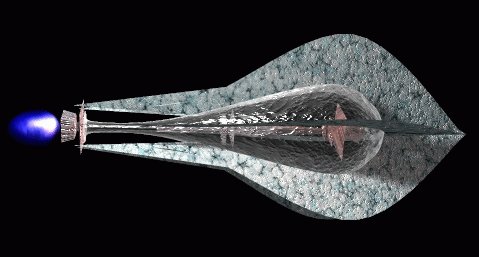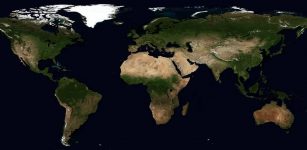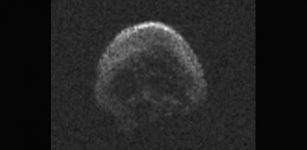Extraterrestrial Probes May Study Us Now But They’re Too Small To Spot – Astrophysicist Says
Cynthia McKanzie – MessageToEagle.com – Scientists have previously suggested we should not dismiss the possibility extraterrestrial probes are currently exploring the Universe. Some of these alien probes may even be in the vicinity of the Earth studying our planet.
Credit: Public Domain
There are many advantages using Von Neumann probes when exploring the Universe. A Von Neumann probe is a robot designed to reach distant star systems and create factories that will reproduce copies themselves by the thousands.
An alien probe could camouflage itself and set up a threshold test of the technology or intelligence of the recipient species, where the test must be met before the species is allowed to communicate with the device.
Scientists have proposed a fleet of extraterrestrial probes might watch our galaxy on a regular basis.
If this is true, then why haven’t we detected these alien devices?
Astrophysicist Zaza Osmanov of Tbilisi State University in Georgia suggests extraterrestrial probes may be so small that we simply cannot spot them.
In his science paper, Osmanov explains highly advanced extraterrestrial civilizations could construct and self-replicating spacecraft out into the universe to explore in a risk-free way.
Using hydrogen atoms from interstellar dust to power themselves, these probes could already be floating around, but we may not have spotted them because we’re looking for larger evidence of alien life.
“The conventional approach to the search for extraterrestrial intelligence implies the search for artificial radio signals, or interstellar beacons targeted at the Earth,” Osmanov explained.
However, extraterrestrial probes could be built on nanoscale making it very difficult, but not impossible to detect these tiny crafts.
As NyPost reports, “says that they could easily self-replicate into a swarm numbering trillions of billions.
This swarm of probes would give off some light as they hoovered up photons along their journey.
And Osmanov says that they might look just like a comet a few miles across, appearing as infrared light.
“All the…results indicate that if one detects a strange object with extremely high values of luminosity increment, that might be a good sign to place the object in the list of extraterrestrial Von-Neumann probe candidates,” he wrote.
“We have considered the scenario when the Type-II civilization needs to ‘invade’ the interstellar clouds by means of the self-reproducing robots.
“And it has been shown that this process will inevitably lead to observational consequences.”
See also:
Invisible Aliens Share Our Biosphere – Scientist Says
5 Unlikely Extraterrestrial Invasion Scenarios
More About Extraterrestrial Life
However, they would likely only be visible if they remained as a swarm – and would almost certainly be too small to spot if traveling on their own.
As previously discussed, “physicist Paul Davies of the University of Adelaide has even raised the possibility of a Von Neumann probe resting on our own moon, left over from a previous visitation in our system aeons ago.
In a paper, scientists Arwen Nicholson and Duncan Forgan take the idea a step further by exploring three different scenarios of probe behavior: using standard powered flight, using gravitational slingshot techniques around stars, and hop scotching star-by-star to get the maximum speed boost under slingshot trajectories.
“Interstellar probes can carry out slingshot maneuvers around the stars they visit, gaining a boost in velocity by extracting energy from the star’s motion around the Galactic Centre.

These maneuvers carry little to no extra energy cost, and in previous work it has been shown that a single Voyager-like probe exploring the galaxy does so 100 times faster when carrying out these slingshots than when navigating purely by powered flight. We expand on these results by repeating the experiment with self-replicating probes.
The probes explore a box of stars representative of the local Solar neighborhood, to investigate how self-replication affects exploration timescales when compared with a single non-replicating probe, “the team writes in their paper.
“From the scaling of the probes’ performance with star number, we conclude that a fleet of self-replicating probes can indeed explore the galaxy in a sufficiently short time to warrant the existence of the Fermi Paradox,” the researchers say.
Written by Cynthia McKanzie – MessageToEagle.com Staff Writer











